The only city in Cornwall – but not the biggest conurbation – Truro had a four-platform station, with a Motive Power Depot for servicing local services to Newham and Falmouth: there were also goods facilities to its north and east. By the time I visited for the first time the Newham Branch and the MPD were closed, and the most northerly platform face was abandoned by the time of a visit a few years later. The Goods traffic was still significant too.

Class 45xx 2-6-2t passenger tank locomotive, number 4550 looks ready for service before the water tower and coaling stage of Truro loco shed on 13th July 1938. Behind it is a raised area with coal wagons that have been propelled from a slope to the right, and the asymmetrical rooflines at the back are the skylights of the depot building, with chimneys above. 380713A01-TRU-s4550-PARKD
 Displaying its GWR origin by its loco number painted on its buffer beam, this apparently early BR picture shows 4549 engaged with shunting carriages in the down sidings at Truro Station. The yard behind it changed quite variably until its eventual disappearance. 5####AN01-TRU-s4549-LIG_D
Displaying its GWR origin by its loco number painted on its buffer beam, this apparently early BR picture shows 4549 engaged with shunting carriages in the down sidings at Truro Station. The yard behind it changed quite variably until its eventual disappearance. 5####AN01-TRU-s4549-LIG_D

5025 “CHIRK CASTLE” runs down from Highertown Tunnel into Truro Station with an up passenger service, possibly in the 1940s as it still wears ‘GW’ on its tender, with the company’s crest. I always thought the houses on the hill behind in 1930s style were very stark for this skyline, and disappointingly not really in keeping with traditional Cornish buildings. 5####CS01-TRU-s5025-PAS_U
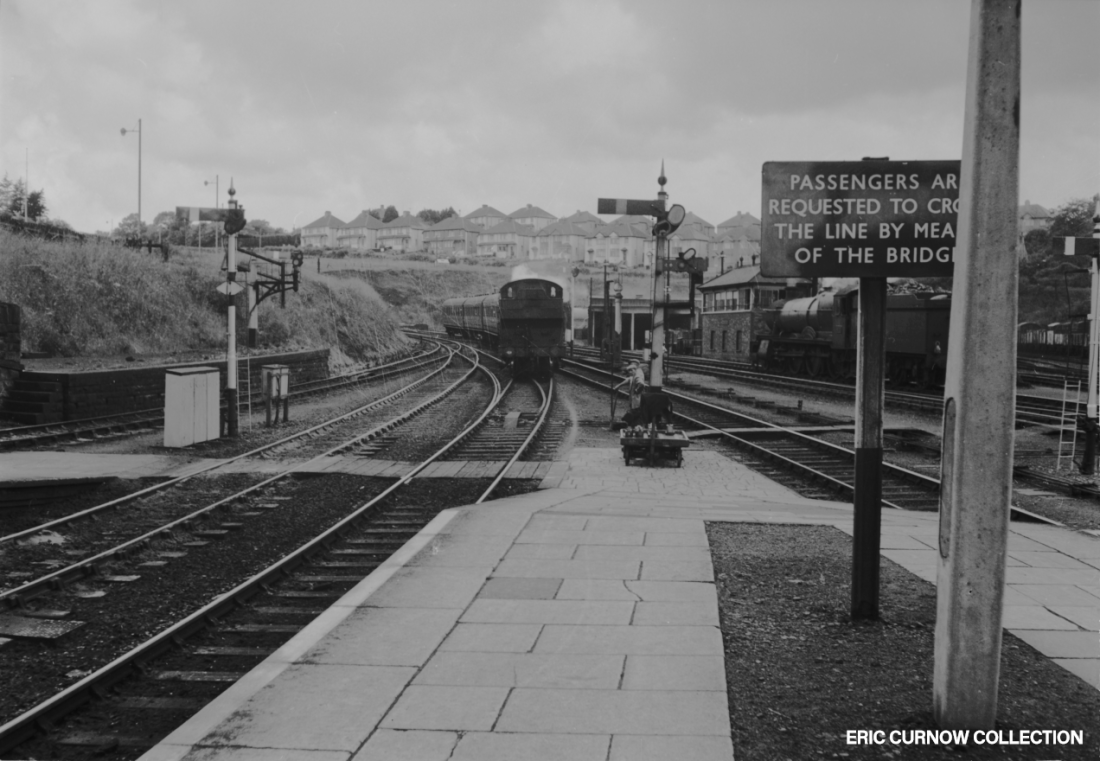
A local train, possibly from Chacewater judging by its arrival platform, arrives at Truro from the west, as a 2-6-0 named loco waits near Truro West Box. The signals have yet to all be replaced with BR standard versions, though a concrete lamp standard shows more clearly modernisation is in progress. Behind lies Truro depot, with its new DMU facility. 5####DA01-TRU-s45XX-PAS_U

On 24th April 1960 5538 simmers while the crew rest on a station seat beside it at Truro’s bay platform with a three coach train for Falmouth. Shadows are cast by the soft sun, and the beautiful granite wall beside intimates the rising incline of the road behind it with a sloping course of slabs, cutting across the horizontal courses. The rest of the station is deserted. 600424A01-TRU-s5538-PAS_O
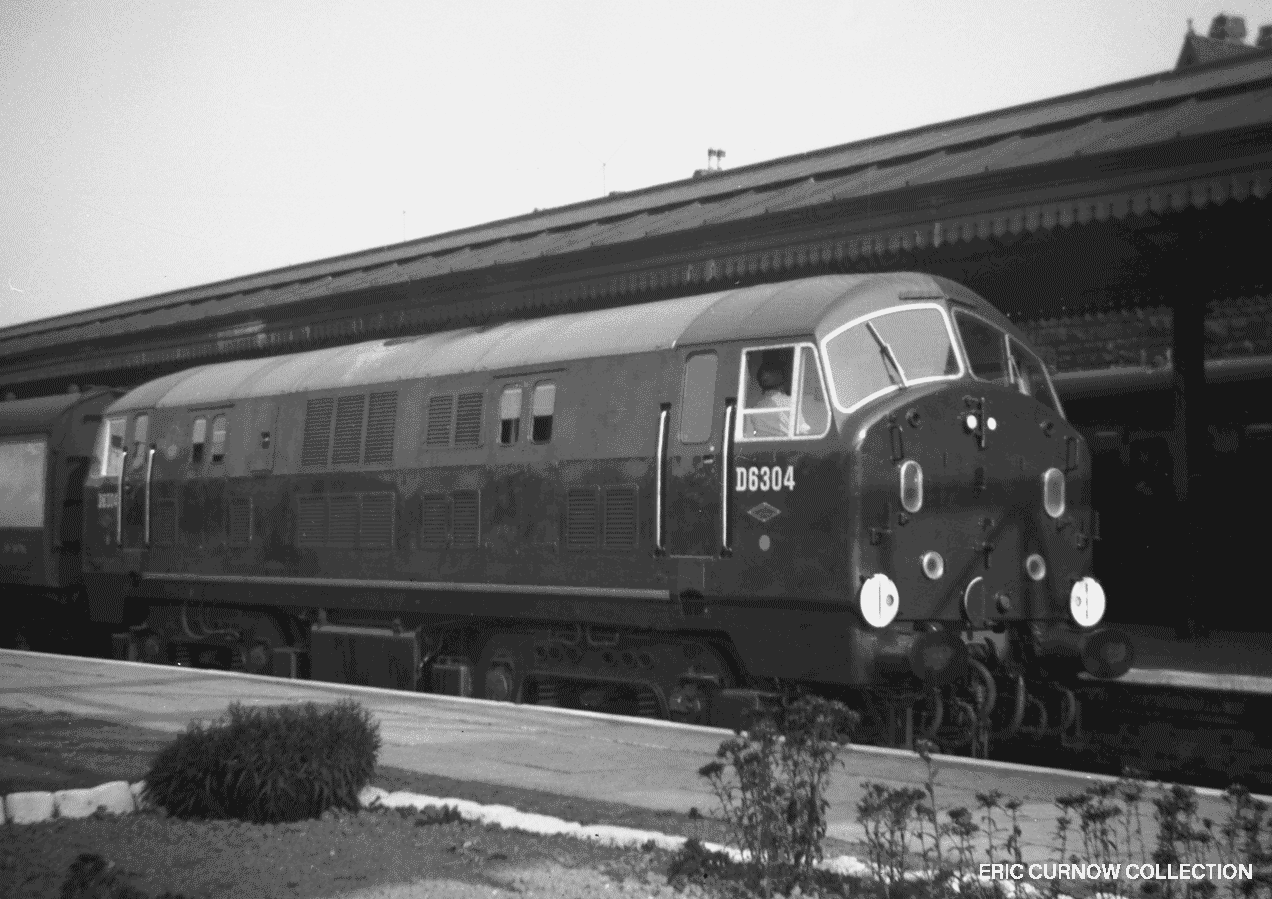 D6304 is in pristine condition as it waits at Truro with a westbound express service in the early years of it service – even the windscreen wipers are arranged symmetrically. Centrally on its bodyside it has small radiator louvres, which were replaced by one grille. 6####EH01-TRU-D6304-PAS_D
D6304 is in pristine condition as it waits at Truro with a westbound express service in the early years of it service – even the windscreen wipers are arranged symmetrically. Centrally on its bodyside it has small radiator louvres, which were replaced by one grille. 6####EH01-TRU-D6304-PAS_D
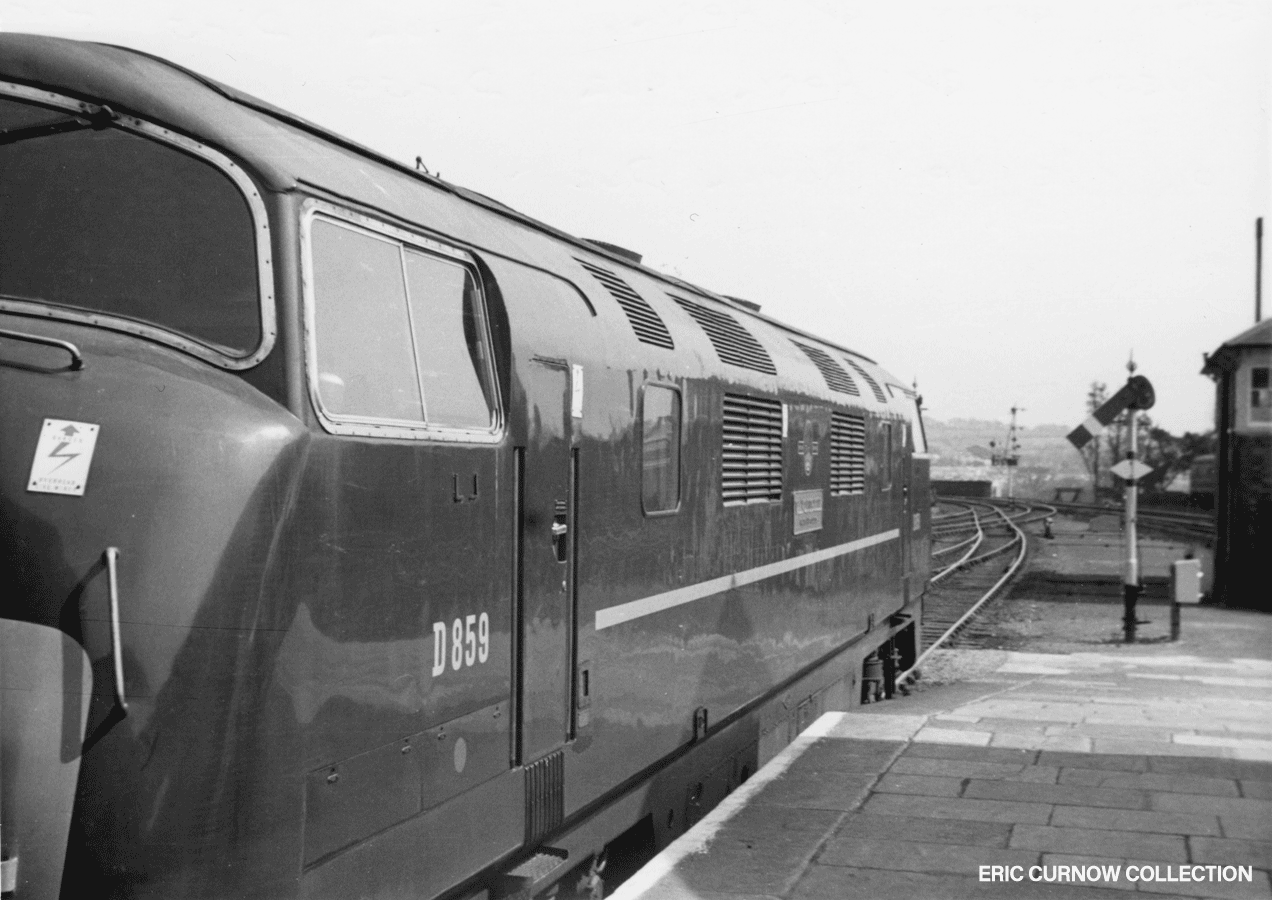 An immaculate D859 “VANQUISHER” gets the “right away” and moves off Platform 4 of Truro Station with the “up” ‘Royal Duchy’ in 1962. This was a period of pride, prior to the Beeching Cuts, where all is neat and tidy, as the litter-free platform and yard area show. 630424A01-TRU–D859-PAS_U
An immaculate D859 “VANQUISHER” gets the “right away” and moves off Platform 4 of Truro Station with the “up” ‘Royal Duchy’ in 1962. This was a period of pride, prior to the Beeching Cuts, where all is neat and tidy, as the litter-free platform and yard area show. 630424A01-TRU–D859-PAS_U

5098 ‘CLIFFORD CASTLE’ is overtaken by a new pair of D63XXs on a down passenger service in 1961 at Truro. To their right are sidings and the down side Goods Shed, and in the foreground a boardwalk across the tracks and part of the superstructure supporting the eastern footbridge. 61###AG01-TRU-D63##-PAS_D

Truro yard hosts D6311 and D6314, recently sent to traffic. Although the rooflines have some exhaust deposits, the kick plates below the doors and the bodyside lines between them still gleam. An exposed hillside spot, the trees nearby do shelter the station. 5####BP01-TRU-D6311-PARKD
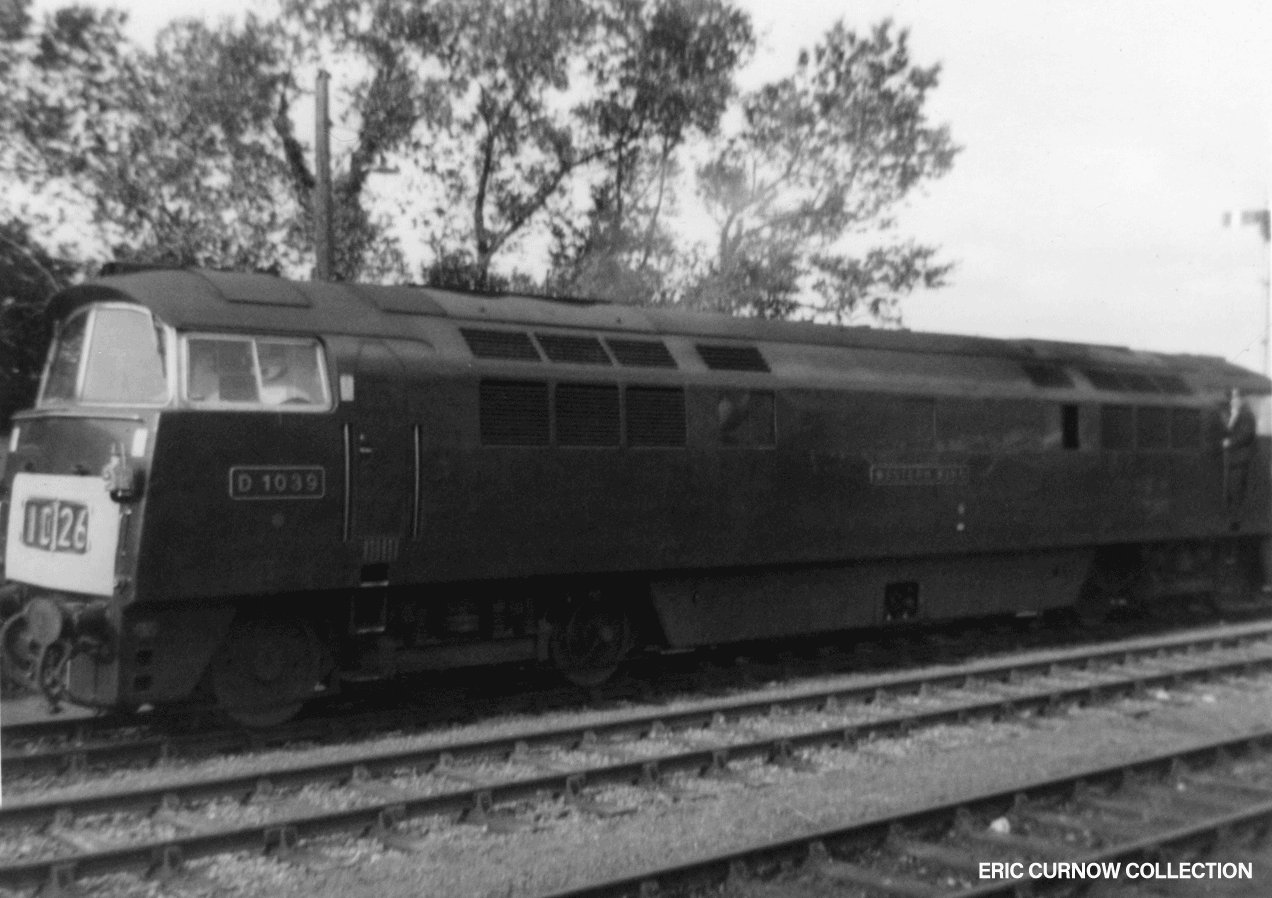
A railman hangs from a cab of D1039 “WESTERN KING” as it manoeuvres at the back of Truro Station yard. It is in maroon livery that has not yet lost its original bodyside gleam – though the steps up to the cab door show wear. It also displays a metal shedcode. 630819A01-TRU-D1039-LIGHT

With cab window still open from acknowledging the “right away’ signal from platform staff, D857 “UNDAUNTED” pulls away westwards with a passenger service from Truro Station on 19th August 1963. There is an 08 shunter (minus chevrons) in the yard behind. 630819A02-TRU–D857-PAS_D
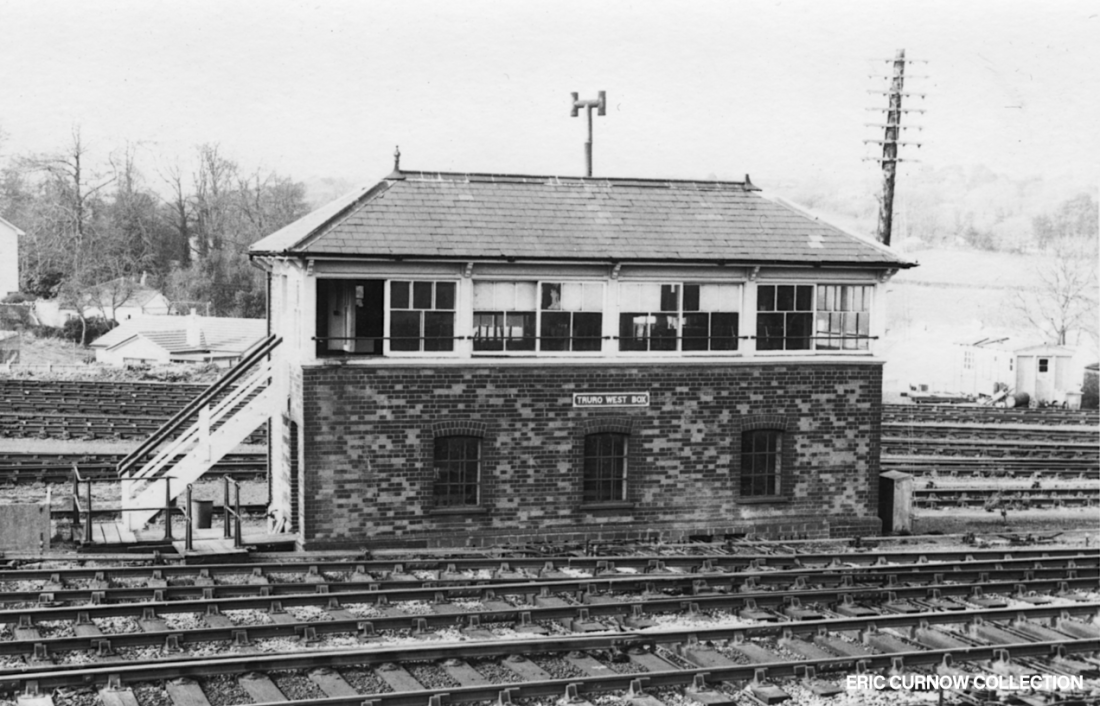
‘TRURO WEST BOX’ had a surprisingly abbreviated nameplate, and was a sight I only noticed on a couple of occasions before its removal. The plethora of lines here was always impressive, and it was a shock to see how rationalisation swept away such a significant feature in the reinvention of the space behind for Cornish Farmers fertiliser trains. Photo: J H Stephens. 6####IG01-TRU-S_BOX-VIS_N

D6309 is in it’s class’ typically poor external condition as it waits in the sidings at Truro Station between duties on 21st July 1970. Its left hand route availability yellow dot has been covered by a data panel, but all else is little changed since its yellow warning panel addition many years earlier. Low loaders of track panels and miscellaneous vans complete the scene. 700721A01-TRU-D6309-PARKD
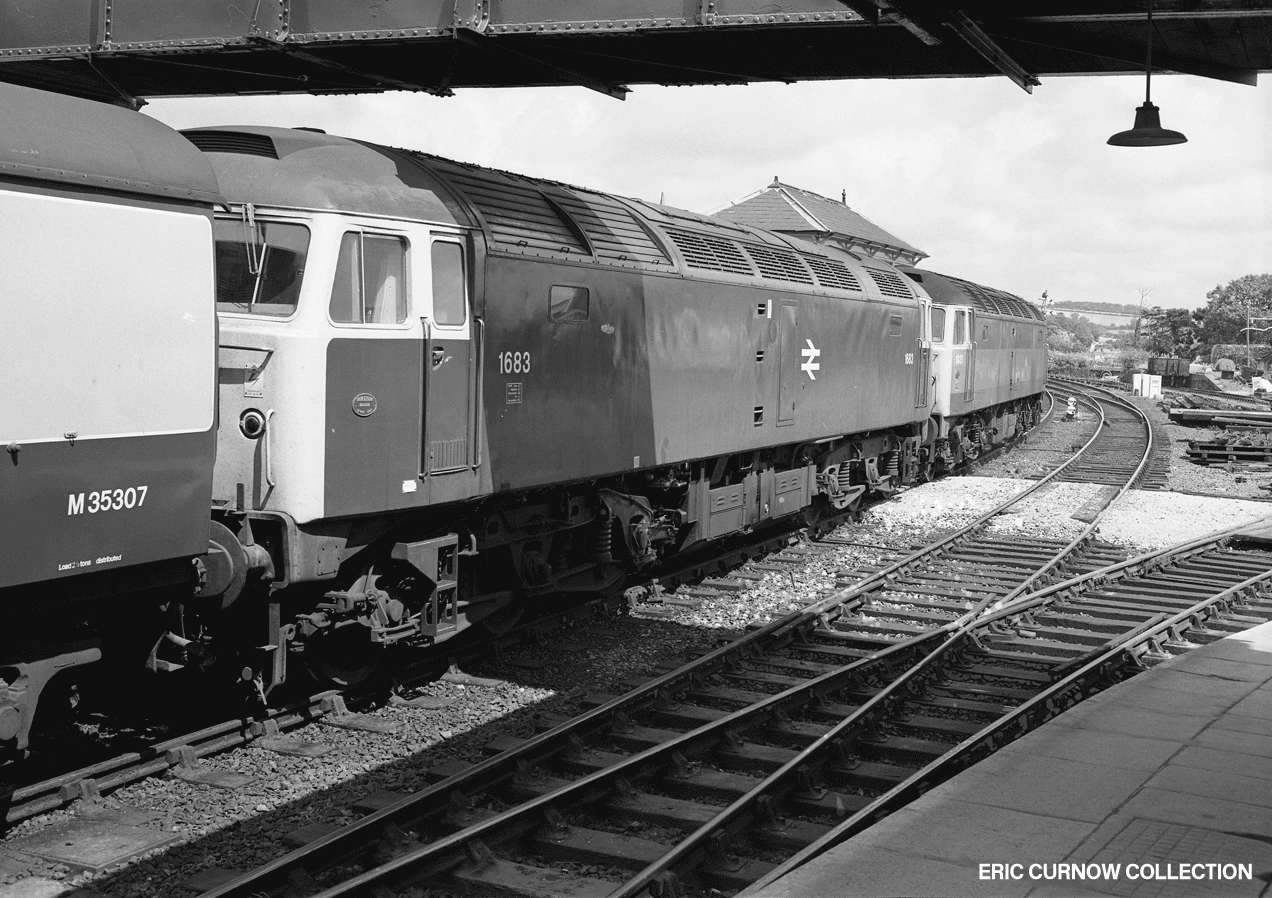 On a Summer’s Day in 1971, Brush Type 4’s 1931 and 1683 head a service east from Platform 3 of Truro station. 1931 is still in two-tone green livery, but 1683 has been repainted into BR blue. The “down” yard behind is untidy with recovered track components. 710724A01-TRU-d1931-PAS_U
On a Summer’s Day in 1971, Brush Type 4’s 1931 and 1683 head a service east from Platform 3 of Truro station. 1931 is still in two-tone green livery, but 1683 has been repainted into BR blue. The “down” yard behind is untidy with recovered track components. 710724A01-TRU-d1931-PAS_U
 With the ‘Home’ signal swung to “off” and the ‘Distant’ left “on”, a ‘Western’ checks its speed after running across the viaduct into the eastern extremity of Truro Station. The yard behind shows a small platform, some flat wagons and agricultural equipment. 7###EU01-TRU-D10##-PAS_D
With the ‘Home’ signal swung to “off” and the ‘Distant’ left “on”, a ‘Western’ checks its speed after running across the viaduct into the eastern extremity of Truro Station. The yard behind shows a small platform, some flat wagons and agricultural equipment. 7###EU01-TRU-D10##-PAS_D
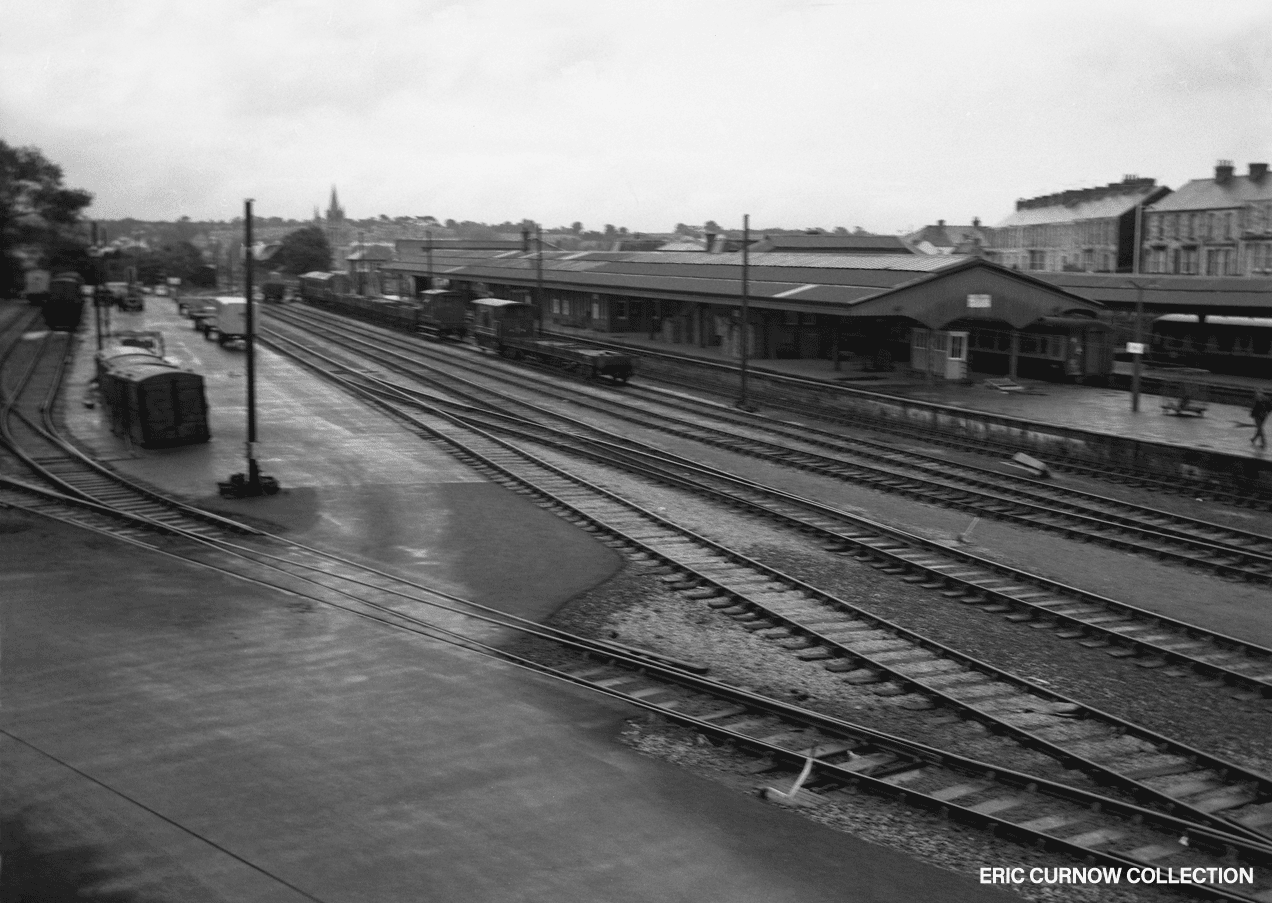
A slightly out-of-focus image of Truro yard, looking east from the footbridge spanning the station on a wet day. To the right, the Falmouth branch train is in, and a couple of tracks away, a carriage of an up service is visible – further left are wagons, trailers and grounded freightliner containers: fresh ballast shows a siding and turnout have been relayed. 73####999-TRU-S_YRD-VI_-E
 3-Car DMU P463 waits departure time for Falmouth in the bay platform at the western, “down” side of Truro Station. A BRUTE and a Royal Mail trolley are beside it on the otherwise bare platform, and on the opposite side is the fine retaining wall of granite blocks. 8####AE01-TRU-P464-PAS_O
3-Car DMU P463 waits departure time for Falmouth in the bay platform at the western, “down” side of Truro Station. A BRUTE and a Royal Mail trolley are beside it on the otherwise bare platform, and on the opposite side is the fine retaining wall of granite blocks. 8####AE01-TRU-P464-PAS_O
 Truro’s soul remaining signal box, after rationalisation of the “up” side yard negated the need for the “West” Box. A very unimpressive nameboard has replaced the GWR origin one, the track level void filled is in, and a control box has been built beside it. 950416A01-TRU-SIGBX-VIS_N
Truro’s soul remaining signal box, after rationalisation of the “up” side yard negated the need for the “West” Box. A very unimpressive nameboard has replaced the GWR origin one, the track level void filled is in, and a control box has been built beside it. 950416A01-TRU-SIGBX-VIS_N
 Exhaust flies backwards as the wheels of P461 grip the track along a newly-ballasted stretch of line in a cutting close to Saveock, on the Truro side of Chacewater. This style of DMU was the most common in West Cornwall – and in my eyes, the most visually attractive. 810428A01-SEK-P461–PAS_D
Exhaust flies backwards as the wheels of P461 grip the track along a newly-ballasted stretch of line in a cutting close to Saveock, on the Truro side of Chacewater. This style of DMU was the most common in West Cornwall – and in my eyes, the most visually attractive. 810428A01-SEK-P461–PAS_D
 There were two stations between Truro and St Austell that closed long before I was aware of them: Probus & Ladock being the westerly of them. As shown, this was a timber construction on what loks like brick facades, in a cutting with large ‘Pagoda’ waiting rooms. I often looked for any remnant of this ‘Halt’, but was never sure of locating it. 32####A01-P&L-STATN-VI_NE
There were two stations between Truro and St Austell that closed long before I was aware of them: Probus & Ladock being the westerly of them. As shown, this was a timber construction on what loks like brick facades, in a cutting with large ‘Pagoda’ waiting rooms. I often looked for any remnant of this ‘Halt’, but was never sure of locating it. 32####A01-P&L-STATN-VI_NE
 Grampound Road looking east, taken from the road overbridge. I did see remnants of this station which were easier to find than Probus as there were nearby buildings as reference, and this print shows the station building on the left with Goods Shed and up siding behind, and platform shelter opposite. Photo: Locomotive & General. 07###AB01-GPR-STATN-VI__E
Grampound Road looking east, taken from the road overbridge. I did see remnants of this station which were easier to find than Probus as there were nearby buildings as reference, and this print shows the station building on the left with Goods Shed and up siding behind, and platform shelter opposite. Photo: Locomotive & General. 07###AB01-GPR-STATN-VI__E

As the running in board starkly proclaims, this is Grampound Road Station – the eastern end of the down platform with waiting shelter and staff hut, in 1936. Beyond the structure is the down siding, and tracks curving away towards St Austell. As can be seen from the scenery beyond, this is a very rural area, without much rail potential. 36###AD01-GPR-PLTFM-VI__E